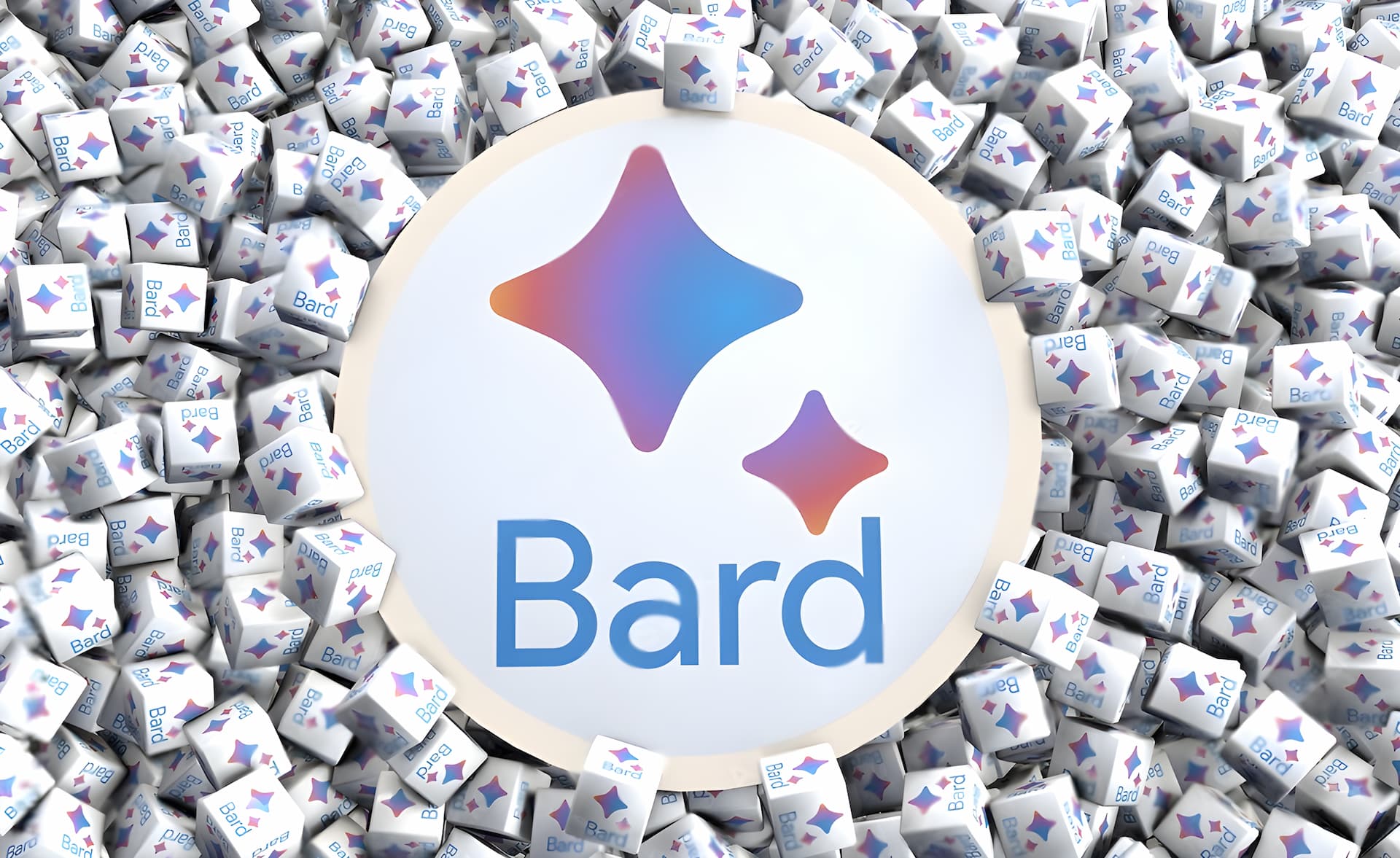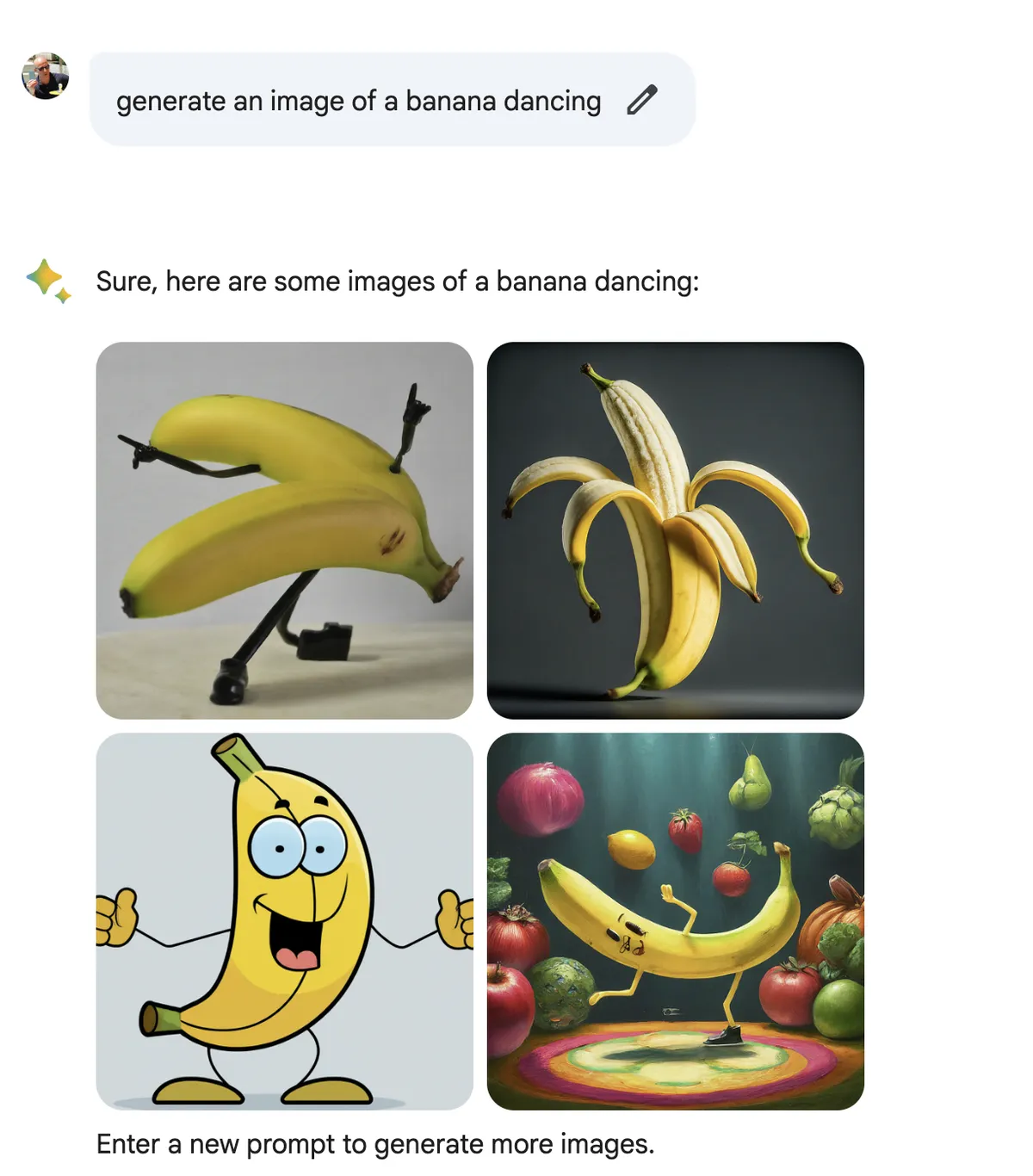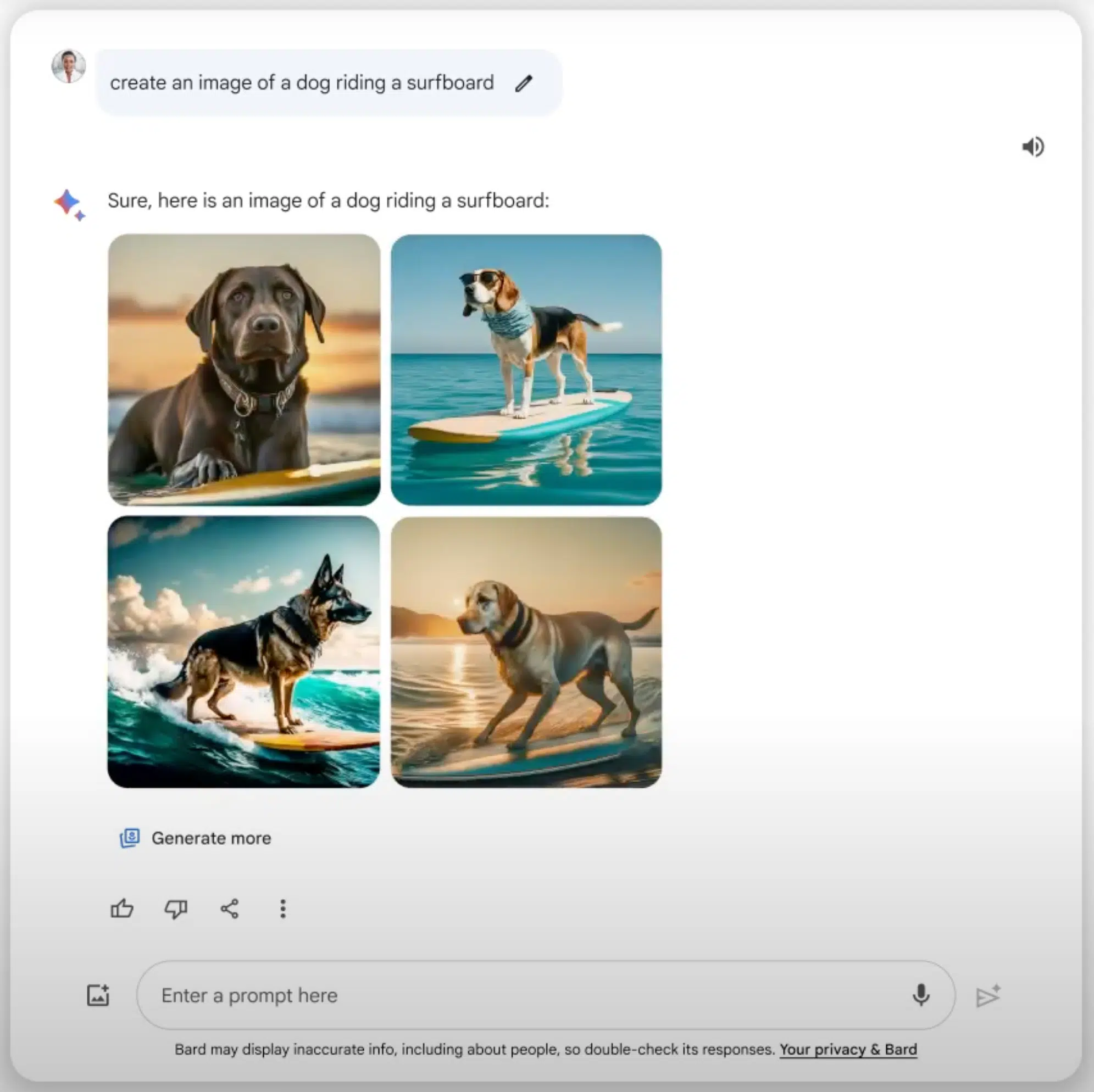Google’s Bard chatbot has introduced AI image generation, a feature that was previously available in rival ChatGPT Plus for months.

With this update, users can now prompt Bard to create photos using Google’s Imagen 2 text-to-image model.
Bard, which is now fueled by Google’s Gemini Pro large language model, was originally designed with image generation capabilities in mind.
Initially, there was an expectation that the more advanced Gemini Ultra model would power Bard; however, the development of this model is still ongoing.
Google has been actively promoting Bard as a strong rival to OpenAI’s ChatGPT Plus, showcasing its capabilities in comparison.
Despite both chatbots delivering commendable performance, Bard falls slightly behind due to its absence of text-to-image features, giving ChatGPT Plus a competitive advantage.
Users can now access the enhanced version of Bard, integrated with Imagen 2, without incurring any expenses, unlike ChatGPT Plus which requires a paid subscription for access.


Recently, AI image generation faced criticism due to the proliferation of sexually explicit fake images of Taylor Swift circulating online.
It remains unclear which platforms were used to create these NSFW images, prompting tech companies to take action to secure their image-generating platforms.
Google responded to the issue by emphasizing the responsible design of Bard’s image capability.
Google announced the integration of a watermarking feature directly into the pixels of generated images, serving as a marker to identify AI-generated content.
Additionally, Google stated that they have implemented various technical and safety measures to prevent the creation of images depicting well-known individuals and to restrict the generation of violent, offensive, or sexually explicit content.
Google has also introduced a new experimental photo tool called ImageFX, powered by Imagen 2.
ImageFX allows users to generate images using simple text prompts, enabling them to interact with generative AI.
Feedback from users using ImageFX goes directly back to Google engineers, contributing to the tool’s development.
Similar to Bard, all images created through ImageFX will be tagged with SynthID and adhere to Google’s AI principles and technical guidelines.
ImageFX joins Google’s suite of AI creation tools, including MusicFX and TextFX, which were launched the previous year.
The tool is currently available for testing on Google Labs, providing users with an opportunity to explore its capabilities and provide valuable feedback.
Today, Bard is receiving several additional expansions, not just limited to image generation.
Although image generation currently supports only English, the chatbot now operates in over 40 languages across more than 230 countries.
In its previous version, Bard was confined to English and accessible in 170 countries, showing a significant expansion in linguistic reach.
Among the languages Bard now supports are Arabic, Bengali, Tamil, and Urdu, widening its accessibility to diverse linguistic communities.
Google has also enhanced its double-check feature to encompass 40 languages.
This feature allows users to assess responses by automatically searching the internet to either support or contradict the provided content.
The expansion of this feature across multiple languages aims to provide users with more comprehensive verification tools regardless of their linguistic background.
Related Stories:
